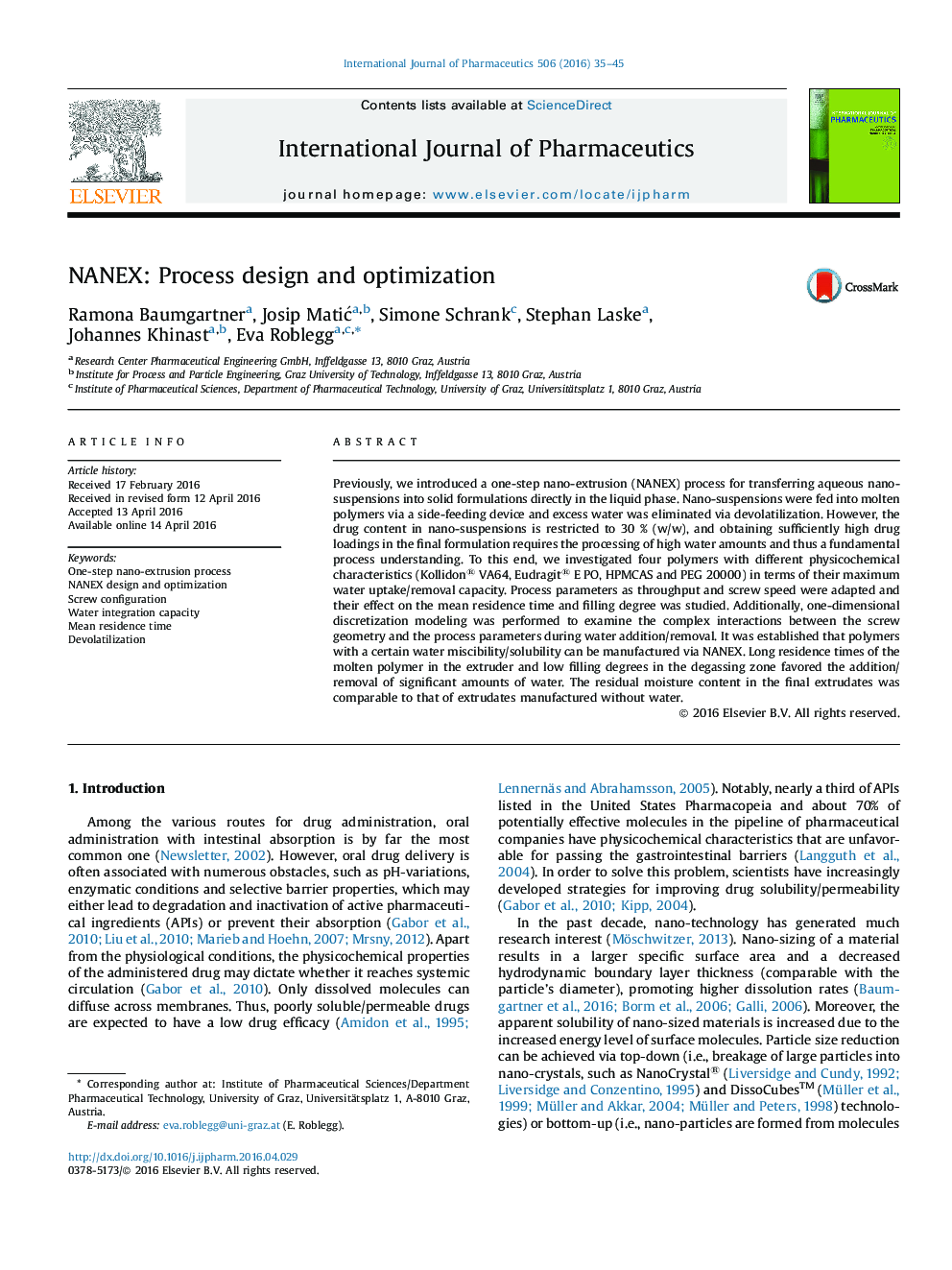| Article ID | Journal | Published Year | Pages | File Type |
|---|---|---|---|---|
| 5817740 | International Journal of Pharmaceutics | 2016 | 11 Pages |
Previously, we introduced a one-step nano-extrusion (NANEX) process for transferring aqueous nano-suspensions into solid formulations directly in the liquid phase. Nano-suspensions were fed into molten polymers via a side-feeding device and excess water was eliminated via devolatilization. However, the drug content in nano-suspensions is restricted to 30 % (w/w), and obtaining sufficiently high drug loadings in the final formulation requires the processing of high water amounts and thus a fundamental process understanding. To this end, we investigated four polymers with different physicochemical characteristics (Kollidon® VA64, Eudragit® E PO, HPMCAS and PEG 20000) in terms of their maximum water uptake/removal capacity. Process parameters as throughput and screw speed were adapted and their effect on the mean residence time and filling degree was studied. Additionally, one-dimensional discretization modeling was performed to examine the complex interactions between the screw geometry and the process parameters during water addition/removal. It was established that polymers with a certain water miscibility/solubility can be manufactured via NANEX. Long residence times of the molten polymer in the extruder and low filling degrees in the degassing zone favored the addition/removal of significant amounts of water. The residual moisture content in the final extrudates was comparable to that of extrudates manufactured without water.
Graphical abstractDownload high-res image (171KB)Download full-size image
